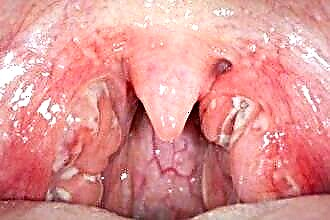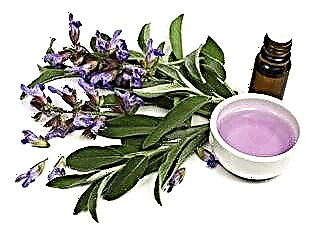 How can you destroy staphylococcus aureus in a child's throat? Treatment methods depend on what type of bacteria caused inflammation of the mucous membranes of the laryngopharynx.
How can you destroy staphylococcus aureus in a child's throat? Treatment methods depend on what type of bacteria caused inflammation of the mucous membranes of the laryngopharynx.
To destroy pathogens, antibiotics, staphylococcal antitoxin, bacteriophage, immunoglobulin and symptomatic drugs are used.
In addition to medicines, physiotherapeutic procedures, in particular ultraviolet radiation, can be used to treat children.
Features and types of staphylococci
Generally speaking, staphylococci are normal representatives of the microflora of the laryngopharynx, nasal cavity and skin. In small quantities, they live in the body of a healthy person, without causing inflammatory processes and infectious diseases. However, with a decrease in immunity, anaerobic microbes begin to multiply rapidly. Waste products of staphylococci poison the body, causing infectious and allergic reactions.
Clinical manifestations and the severity of the course of ENT diseases largely depends on what kind of bacteria caused the inflammation. When carrying out a bacterial culture in sputum, the following types of staphylococci can be detected:
- golden - provokes purulent inflammation of almost any type of tissue and organs;
- saprophytic - affects mainly the organs of the genitourinary system;
- epidermal - localized in the upper layers of the epidermis, but if untreated, it can affect the nasopharyngeal mucosa;
- hemolytic - one of the most resistant to antimicrobial agents of staphylococci, affecting the respiratory, excretory and cardiovascular systems.
Hemolytic staphylococcus aureus develops rapidly, causing severe complications such as sepsis, meningitis, and pyelonephritis.
It should be noted that Staphylococcus aureus and Staphylococcus aureus in a child's throat multiplies very quickly. Anaerobic bacteria readily adapt to the action of antibacterial agents, in particular to penicillins and cephalosporins.
Therefore, it is rather difficult to choose the best medicines for the treatment of staphylococcal diseases in children. In the absence of drug treatment, microbes mutate and cause serious complications, which in rare cases lead to death.
Possible diseases
Decreased immunity, hypothermia, iron deficiency anemia, hypovitaminosis and antibiotic abuse can cause the rapid multiplication of microbes in the respiratory system. Staphylococcal infection leads to the development of a number of bacterial diseases:
- pharyngitis;
- laryngitis;
- sphenoiditis;
- sinusitis;
- laryngotracheitis;
- bronchopneumonia;
- otitis media;
- acute tonsillitis.
Each disease has its own distinctive symptoms that need to be considered in more detail. The difficulty lies in the fact that the general clinical manifestations of staphylococcal infection can be easily confused with the symptoms of a viral disease. Many parents believe they can cope with the disease on their own and rely on personal experience. However, inadequate treatment of staphylococci in the throat can lead to disastrous consequences, up to the general damage to the body by bacteria that have penetrated the systemic circulation.
Sore throat symptoms
Staphylococcal angina is a bacterial inflammation of the pharyngeal mucosa and palatine tonsils (tonsils). Fever, muscle weakness and sore throat when swallowing are characteristic symptoms of the disease, which appear several hours after infection of the body. Because young children are more susceptible to infections than adults, angina is more severe.
Typical manifestations of streptococcal sore throat include:
- headache;
- fever;
- painful swallowing;
- high fever;
- myalgia;
- salivation;
 lack of appetite;
lack of appetite;- drowsiness.
Staphylococcal angina in children often develops against the background of acute respiratory viral infections, influenza, scarlet fever and chronic rhinitis. Typically, pathogens are localized in the glands and lymphoid tissues at the back of the throat. When characteristic signs appear, it is advisable to examine the child's throat. The presence of white plaque on the root of the tongue and the walls of the pharynx, as well as a slight increase in the palatine tonsils, is 100% confirmation of bacterial inflammation of the respiratory tract.
Laryngitis symptoms
Laryngitis is an acute inflammation of the laryngeal mucosa, which is characterized by hyperemia (redness) and swelling of the larynx. The development of the disease in children is often preceded by chronic rhinitis, tonsillitis, influenza, scarlet fever and overstrain of the vocal cords. Typical manifestations of staphylococcal laryngitis are:
- dry throat;
- pain in the larynx;
- dry or moist cough;
- subfebrile temperature (not higher than 38 degrees);
- separation of sputum with impurities of pus when coughing;
- decrease in the timbre of the voice;
- sensation of a foreign object in the throat.
One of the most dangerous manifestations of the disease is laryngospasm. An involuntary contraction of the pharyngeal muscles causes the glottis to close, which can cause loss of consciousness or asphyxiation. Untimely passage of antimicrobial therapy entails the development of sluggish inflammation in the laryngeal mucosa and, accordingly, chronic laryngitis.
Pharyngitis symptoms
Staphylococcus aureus in the throat often causes the development of bacterial pharyngitis in children. Hypothermia, high-carbohydrate foods, diabetes mellitus, chronic diseases, and congenital immune deficiencies can contribute to the growth of bacteria. The disease is characterized by inflammation of the throat walls, which leads to tissue swelling and difficulty breathing.
The classic symptoms of the development of staphylococcal pharyngitis include:
- sore throat;
- dry cough;
- general malaise;
- hoarseness of voice;
- high fever;
- soreness of the lymph nodes;
- discomfort when swallowing;
- mucus on the walls of the throat.
In frequently ill children with lowered immunity, the risk of developing bacterial pharyngitis is approximately 40-45%.
If the inflammation is left untreated, pathogens can invade the nasal mucosa and Eustachian tube. This can lead to complications such as bacterial rhinitis, rhinosinusitis, or tubo-otitis. In infants, the symptoms of pharyngitis practically do not differ from the manifestations of a cold. The child becomes whiny, refuses to eat and does not sleep well.
Antibacterial therapy
 Staphylococcus aureus is practically immune to antimicrobial agents, therefore, new generation antibiotics are used to treat bacterial inflammation. They contain active substances that prevent the replication of pathogenic DNA and, accordingly, the reproduction of microbes. For the treatment of children, antibiotics are selected that have the least pronounced toxic effect, namely:
Staphylococcus aureus is practically immune to antimicrobial agents, therefore, new generation antibiotics are used to treat bacterial inflammation. They contain active substances that prevent the replication of pathogenic DNA and, accordingly, the reproduction of microbes. For the treatment of children, antibiotics are selected that have the least pronounced toxic effect, namely:
- Rifaximin;
- "Nafitsillin";
- "Kanamycin";
- Ofloxacin;
- "Amoxiclav".
Pathogenic bacteria that cause the development of tonsillitis, pharyngitis and other ENT pathologies secrete substances that lead to poisoning of the child's body. Therefore, delayed treatment of staphylococcal infection can often provoke the development of toxic shock, leading to the death of the patient.
Etiotropic agents that eliminate pathogens should be taken for at least 7-10 days.
It should be understood that uncontrolled intake of antibiotics can worsen the patient's well-being and even provoke the development of microbial multidrug resistance, i.e. their insensitivity to most antimicrobial agents.
Antistaphylococcal immunoglobulin
Antistaphylococcal immunoglobulin is an injection drug that contains antibodies to most strains of pathogenic gram-positive microbes. The medicinal solution is obtained from donor blood or serum. The dosage and duration of intramuscular injections depends on the child's age and weight.
Direct indications for the use of the drug are any staphylococcal infections in patients aged 6 months. Typically, antistaphylococcal immunoglobulin is used in conjunction with antibiotics to enhance the action of antimicrobial components. With the help of the drug, it is possible to eliminate even generalized forms of inflammation, up to sepsis.
Advanced forms of purulent tonsillitis and laryngitis are treated with hyperimmune antistaphylococcal plasma. It contains specific antibodies that destroy almost any strains of gram-positive bacteria, including Staphylococcus aureus. The medicinal solution is administered intravenously to children for 2-3 days, after which the symptoms of the disease are smoothed out.
Staphylococcal bacteriophage
Bacteriophages are viruses that literally devour disease-causing bacteria. It should be noted that some types of pathogenic microbes are capable of producing substances that neutralize the action of bacteriophages. For this reason, before using medications, it is necessary to accurately establish the sensitivity of phages to pathogens of bacterial inflammation.
Important! Before use, the bottle with the drug must be shaken to completely dissolve the precipitate.
Staphylococcal bacteriophages are widely used in the treatment of purulent-inflammatory diseases of the throat, trachea, bronchi, nose and gastrointestinal tract. The drug is available in the form of ointments and injection solutions, which are injected directly into the foci of inflammation. The active components of the product almost instantly neutralize pathogenic bacteria, which helps to alleviate the symptoms of the disease.
Bacteriophages can be used to treat localized and generalized septic inflammations not only in the airways, but also in the urogenital canals. The medicine is recommended to be used to eliminate staphylococcal infections complicated by otitis media, pneumonia, tracheitis, pleurisy, etc.
Staphylococcal toxoid
Staphylococcal toxoid is an immunocorrecting drug that stimulates the so-called antistaphylococcal immunity in the child's body. Regular use of the drug enhances the production of antibodies that can resist the development of staphylococcal flora in the respiratory tract. Toxoid can cure bacterial inflammation not only in the throat, but also on the skin.
Staphylococcal toxoid can be used to prevent pyoinflammatory infections in immunocompromised patients. The drug is used to treat patients aged 16 and over, since its active ingredients can provoke severe allergic reactions in young children. To achieve the desired results, the solution is injected subcutaneously every two days, gradually increasing the dosage.
Gargling
In addition to specific drugs for the destruction of staphylococci in the throat, antiseptic rinsing solutions are used. Regular sanitation of the oropharynx allows you to clear the mucous membrane from about 50-60% of pathogens that provoke purulent inflammation. The scheme of pediatric therapy for sanitizing procedures includes:
- "Propolis solution" - disinfects and softens the throat, preventing microbes from penetrating deep into the respiratory tract;
- "Ingalipt" - eliminates local manifestations of pharyngitis, tonsillitis, stomatitis and other ENT diseases;
- "Chlorophyllipt" - increases the concentration of oxygen in the tissues, which makes it possible to multiply the effect of antibiotics and accelerate the regeneration processes in the mucous membranes of the throat.
From folk remedies for gargling, decoctions based on echinacea, medicinal chamomile, burdock root and yarrow are used. Phytoreparations gently affect the mucous membrane, helping to eliminate inflammatory processes and flushing out pus from lesions.
However, it should be borne in mind that alternative medicine can cause adverse reactions in children. Therefore, before using decoctions and infusions, it is advisable to consult with a local therapist or pediatrician.

 lack of appetite;
lack of appetite;

